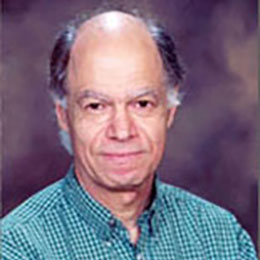David Nurok, Ph.D.
Associate Professor Emeritus

Associate Professor Emeritus
Our research is focused on identifying and understanding the variables that affect the performance of Pressurized Planar Electrochromatography (PPEC), which is a new separation technique invented in our laboratory. In PPEC an electric field of about a kilovolt per cm is applied across the layer of a Thin Layer Chromatography (TLC) plate, and this results in the mobile phase being driven by the electroosmotic force. The mobile phase flow rate depends on the magnitude of the applied field, and this allows separations to be designed that are both very fast and of very high chromatographic efficiency. In fact, for a given particle size of the sorbent layer, the efficiency of PPEC is comparable to that of High Performance Liquid Chromatography (HPLC). This contrasts to classical TLC, which is a slow and inefficient separation technique.
TLC nevertheless has several attractive attributes that are shared by PPEC but not by HPLC. These include the ability to separate multiple samples simultaneously, the fact that there is no need to transport analytes to a detector after separation, the ease of performing post-separation visualization reactions of which there are a large number available, and the ability to perform true two-dimensional separations (as compared to the virtual two-dimensional separations obtained by HPLC). Of all chromatographic techniques, only PPEC allows samples to be separated as a two-dimensional array. We have reported an example of such a separation where nine five-component samples were separated on a 2.5 cm x 10.0 cm sorbent layer in one minute, i.e. in less than seven seconds per sample.
An additional attractive feature is that a PPEC separation can be rapidly interfaced with a mass spectrometer using Desorption Electrospray Ionization (DESI).
The design of the apparatus for PPEC is an ongoing project in collaboration with Dr. Robert Santini, a senior scientist in, and the former director of, the Amy Facility for Chemical Instrumentation in the Chemistry Department of Purdue University.
The two chromatograms below illustrate the difference between PPEC and TLC. The two separations of the same analyte mixture were performed on identical TLC plates using the same mobile phase. The run time for PPEC was 1.0 min and for TLC was 24 min. Note the sharper peaks and better resolution in PPEC.
Our approach has been discussed in the 18th May 2009 edition of C&E News and can be found at: http://pubs.acs.org/cen/coverstory/87/8720cover.html
D. J. Janecki, A. L. Novotny, S. D. Woodward, J. M. Wiseman, and D. Nurok "A Preliminary Study of the Coupling of Desorption Electrospray Ionization - Mass Spectrometry with Pressurized Planar Electrochromatography" Journal of Planar Chromatography, 2008, 21, 11 - 14.
A. L. Novotny, D. Nurok, R. W. Replogle, G. L. Hawkins, and R. E. Santini "Results with an Improved Apparatus for Pressurized Planar Electrochromatography" Analytical Chemistry, 2006, 78, 2823 - 2831.
D. Nurok, J. M. Koers, A. L. Novotny, M. A. Carmichael, J. J. Kosiba, R. E. Santini, G. L. Hawkins, and R. W. Replogle "Apparatus and Initial Results for Pressurized Planar Electrochromatography" Analytical Chemistry, 2004, 76, 1690 - 1695.
D. Nurok "Planar Electrochromatography" Journal of Chromatography A, 2004, 1044, 83 - 96.